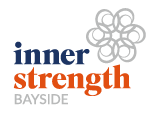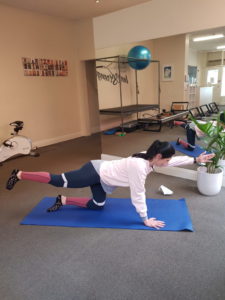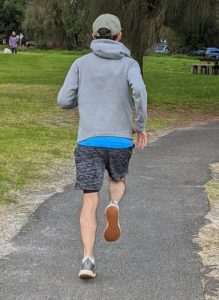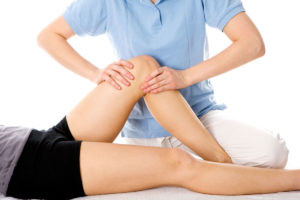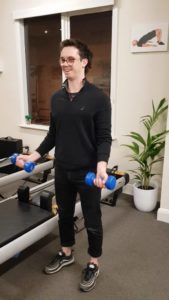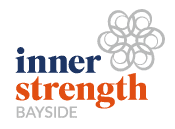Leaders in Physiotherapy and Physio-led Exercise
News
20 min Pilates Class – Get Moving!
Join our Physio Luci for the 20 min core workout below. This Pilates Class is suitable for all fitness levels. Options for use of a theraband given if you have one. As always, stop if you feel any pain, especially in your back or neck and consult your Physio. Share with family and friends Enjoy!
Read MoreExercising during COVID
Have you started running or changed your exercise regime due to the COVID shutdowns? Starting any new form of exercise can be challenging and if not done gradually it can cause injury. Overuse injuries or flare ups of old injuries (such as tendinopathies, joint pain and muscle strains) are commonly seen during the early stages of taking up a new form of exercise. Factors that cause these types of injuries are: Incorrect footwear (size, fit, type) Poor technique Lack of warm up and cool down Poor load management – going too hard to quickly! Tips to get you exercising safely: Ensure you have appropriate equipment and footwear that is the correct size and provides you with the required support to ensure ideal foot and lower limb alignment. Do not embark on a new exercise regime if you are carrying an injury without seeking advice from your physio or medical professional. Start small and gradually increase your load, distance and speed. Ensure to properly warm up and cool down. What is involved in a proper warm up/ cool down? An ideal warm up should take approximately 5 to 10mins and be targeting the specific muscle groups required for your type of exercise. The aim of a warm up is to gradually increase your heart rate and prepare your muscles for your session to help prevent injury. Example of a running warm up: Brisk walking or slow jog Dynamic stretches: leg swings, lunges, calf pumps, mini single leg squats If you are going on a more strenuous run you may also want to include some running drills/ sprints An ideal cool down involves approximately 5 minutes of low-level cardio (e.g. walking, slow jogging, cycling) helps to gradually lower your heart rate. After this period would be an ideal time to complete some static stretches is required. Do I really need to stretch? While the evidence to support stretching is limited, there is a time and a place for stretching and it may be beneficial for you. It is important to incorporate dynamic stretching into your warm up and if you need to do static stretches due to an assessed muscle imbalance then it is best to do those following your cool down. Things to note about stretching: Dynamic stretches are movements such as leg swings, hamstring curls and lunges that move your muscles through their range without overstretching. Static stretches must be held (no bouncing) for 20-30 seconds and should not be painful. Ensure to stretch both sides. Keep breathing! If you are experiencing any niggles or injuries or are having any issues after embarking on a new exercise regime, or just don’t quite know where to start, seek guidance from one of our physios to ensure you don’t overdo it and set you up with a plan to reach your health and fitness goals! Written by Caitlin Collenette, Physiotherapist
Read MoreWe are hiring a full or part time Physio – Apply now!!
At InnerStrength of Bayside, we are a premier physiotherapy clinic with state of the art facilities and a large service offering. We specialise in Physio-led Exercise, drawing on the Clinical Pilates method, cancer rehabilitation (Pinc and Steel), pre and post natal care, dry needling and exercise rehabilitation. Our friendly staff remains committed to providing clients and the wider community with industry-leading physiotherapy…
Read MoreCovid Update
We remain open during the latest August Stage 4 restrictions. Our face to face consultations can only occur if stopping or delaying treatment could result in a deterioration of your functional independence. If it is not urgent, we can consult via Online Video Consultation (telehealth) for both Physiotherapy and Physio-led Exercise. From September 28th 2020 we will be able…
Read MoreAre you going skiing/ snowboarding this winter?
Winter is approaching and you may be planning a trip to the mountains to hit the slopes, but are your legs and knees prepared? Skiing and snowboarding are extreme sports and there are many injuries that can occur while on the slopes, some of these more avoidable than others. It is extremely important to prepare your body as best you can to prevent injuries specifically knee injuries such as ACL tears or ruptures, meniscal injuries and other knee sprains and tears. What you can do to prepare: Your buttocks, quads and hamstrings muscles are all incredibly important for both skiing and boarding. Ensure to work all of these muscle groups in your preparation. Ensure to include both single leg and double leg loaded exercises. Don’t forget to work your core. A strong core will make life easier for your legs, help with endurance on those longer runs and aid in injury prevention. Do some cardio too! Cycling is a great way to build up the leg muscles while getting some cardiovascular fitness at the same time. Train your legs for at least 6 weeks prior to hitting the slopes. Ideal exercises: Squats: both single leg and double leg Jump squats Lunges Planks When you are on the slopes: Warm up, stretch and cool down. Check your equipment is functioning properly e.g. bindings are set to your weight and height so that they will release when they need to. Correct technique: if you don’t know, take lessons. It is harder than it looks! Follow Mountain safety signs! If you are carrying an injury or just need some advice on how to best prepare your body for your upcoming snow holiday, call the clinic on 8555 4099 to make a booking with one of our physiotherapists
Read MoreHave you got jaw pain?
Your temporomandibular joint (TMJ) on the sides of your face allows your jaw to move up and down and side to side, so you can talk, chew, and yawn.Problems with your jaw and the muscles that control it are known as temporomandibular disorders (TMD). What causes TMD? Direct injury to your jaw, head or face Stress, which can lead to teeth grinding or clenching. This puts a lot ofpressure on the joint. Wear and tear of the joint An uneven bite What are the symptoms of TMD? Pain in your face, ear, neck and/or shoulders, when you chew, speak, or open your mouth wide Locking of the jaw in a particular position A headache around your temples Clicking, popping, or grating sounds in the jaw joint when you open/close your mouth or chew. A tired feeling in your face Trouble chewing or an uncomfortable bite Swelling on the side of your face What can you do to relieve symptoms of TMD? Avoid grinding/clenching your jaw – Keep your teeth slightly apart as often as you can. This will relieve pressure on your jaw. Dentists may assist in providing advice and management for this. Avoid opening your mouth wide Practice good neck and shoulder posture. For example, avoid resting your chin on your hand or the phone between your shoulder and ear. Learn relaxation techniques to help loosen up your jaw Physiotherapists can assist in treating this condition by performing manual therapy on the muscles and joints surrounding the temporomandibular joint and neck. Dry needling can also be a helpful treatment tool for this condition. If you would like to book a physio appointment for assessment and treatment of your jaw pain, call us on 8555 4099 or BOOK ONLINE.
Read MoreTips for returning to the gym
If you’ve had 3 months off, it’s probably best to ease back into gym life! Start by lowering your weights and focus on building mind-muscle connections. Once you’ve got your form right, steadily increase back up to your normal weights. This will be great in maximising your gains and preventing injury! A guide may be to reduce by 50% and…
Read MoreHow Does Trigger Point Dry Needling Help With Musculoskeletal Pain?
What is dry needling? Commonly also known as trigger point dry needling, it is a procedure where fine needles (finer than what is used for a blood test) are inserted directly into the skin and the muscle for therapeutic purposes. These may include relieving acute and chronic pain, improving muscle length, altering muscle activation patterns or assisting with sleep and…
Read MoreWhat do you need to know about our Online Video Consultations/Telehealth?
We are still open for appointments within the clinic, however if you are isolating or prefer to stay at home, we also offer online video consultations. If this sounds daunting, don’t worry – we will walk you through the process. Our Online Consultation Fees:
Read MoreAre you currently working from home?
Is your desk set-up working for you? Are you struggling with neck and back pain or stiffness when you are working? An ideal desk set-up is imperative to ensure you reduce the impact of computer/ desk based work on your spine. Stepping back and having a look at your workstation can help you determine what is wrong and how you…
Read MoreThoracic Mobility Exercises
Have you got a stiff upper back or neck at the moment? Try these stretches: Child’s Pose Stretch (+/- foam roller) Thread Needle (+/- foam roller) Clam Shell Stretch Bow and Arrow (+/- theraband) Sunbather (+/- foam roller) Foam Roller Thoracic Spine Extension Foam Roller Chest Stretch Thoracic resisted rotation
Read MoreOnline Video Consultations
WE ARE NOW OFFERING ONLINE VIDEO CONSULTATIONS! Please contact us on 8555 4099 to learn more or book online!. All you need is a computer, tablet or smart phone with a camera and microphone. From April 12th, some private health funds will cover online video consultations (telehealth) Until this time, we are introducing temporary reduced pricing. Australian Physiotherapy Association National…
Read More